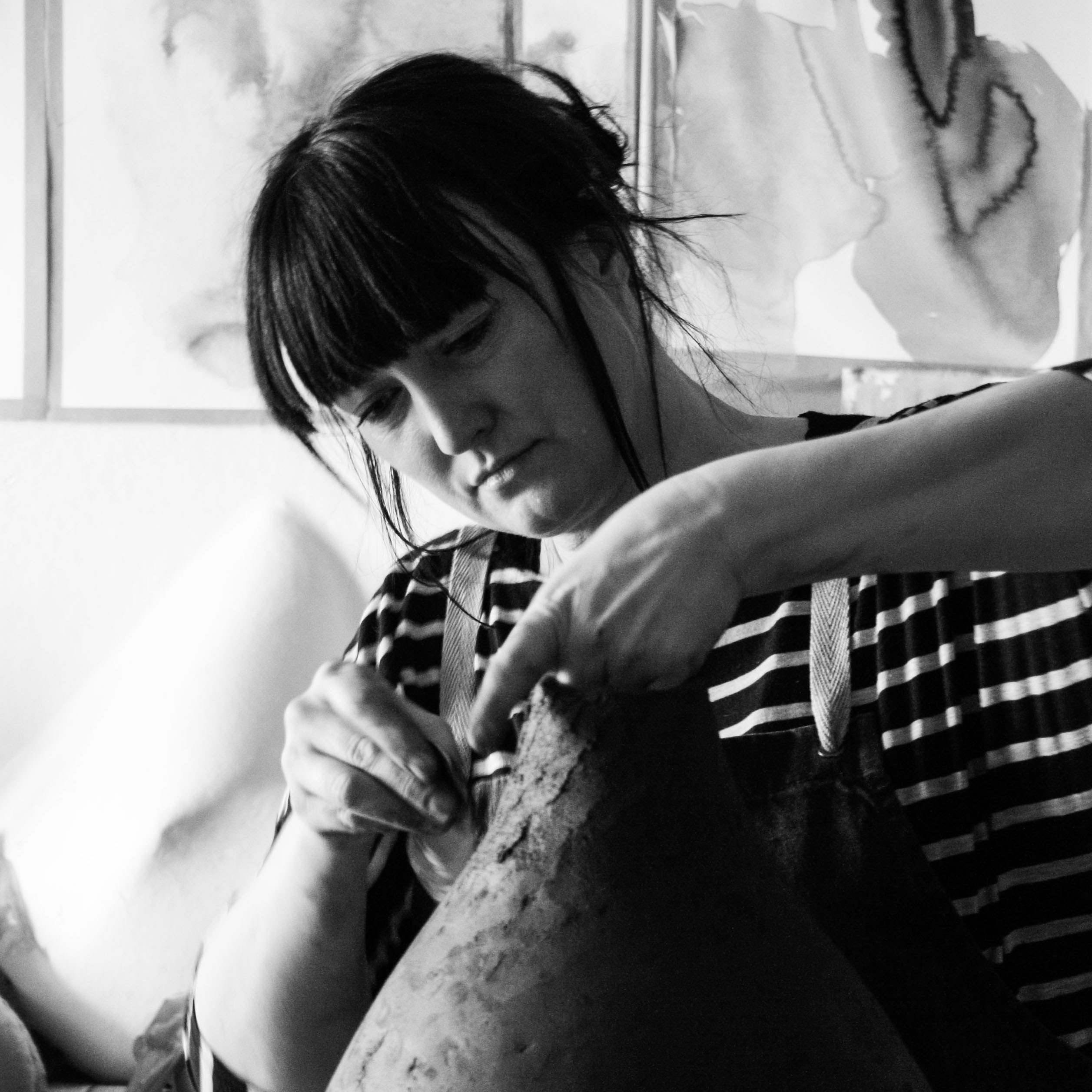
Lillian Tørlen
Lillian Tørlen is a ceramic artist living and working in Norway. Her work is site-related and inspired by the environment where the work will exist, inviting the viewer to pause, contemplate and re-evaluate space.
If you had access to all the powers, how would you improve the world?
Make everybody feel the security that so few are fortunate to have.
What are the biggest sustainability challenges in your work and how are you addressing them?
Though ceramics is a natural product with a long lifespan there are challenges. One of them is that I’m solidifying clay in a process that can’t be unmade. You can’t change ceramic back to clay to be used again. So, my main problem currently is what to do with broken pieces and those that come out of the kiln as rubbish or unusable. Recycling them in such a way that facilitates a new life is not yet readily available. Together with a colleague I’ve been thinking of ways to reuse our broken or discarded pieces, but nothing solid has yet come out of it. Though we have some ideas that we’re working on. For now I try to be conscious by reclaiming and reusing scraps of dried clay, and not to fire pieces I deem subpar. I make scaled down prototypes in order to test ideas, rather than full size ones.
Which conscious lifestyle choices are you making? And are you considering any new ones?
At the moment I’m doing more exercises. I got a puppy that keeps me on my toes and makes long walks unavoidable.
What have you rebelled against in the past, and what are you rebelling against now?
I don’t feel like a rebel to be honest. I just like to follow my own way and do things how I want to do them. Nobody has tried to stop me from that, so there hasn’t been a need to rebel. If I rebel at something, it is the routine acceptance of “how things are”. I’m trying to see things a different way, from my own point of view, pushing boundaries and constrictions.
Do you think dishware can still be improved? If yes, in what way?
I don’t know if improved – with regards to functionality – but certainly rethought.
What was the inspiration for your Steinbeisser pieces?
As I often have a point of departure in human psychology and how we relate to our surroundings, this time I’ve played with function and dependency. Both in how the ceramic and wood pieces relate to each other, as well as the relationship between individuals and the objects in the handling of them. I wanted to play with the idea of function/non-function and the interaction between people and objects in the context of dining. The inspiration was the idea of co-dependency, the roles we take and how we rely on each other in sometimes unproportionate ways. I think of functional dishware as a supportive structure of the meal, something to serve on and eat off. And hopefully it looks good while doing it. I wanted to have the dishware turn the table on this notion and make pieces that would themselves need supporting structures, other objects to prop them up, and diners and service staff to help out. Something that would make demands, and that unabashedly would be complicating the dining experience. At the same time, they have a fragility and vulnerability, in that they actually are kind of helpless, without support they don’t work.
Describe your work in 3 words!
Playful. Poetic. Reflective.
What kind of materials do you use and where do you get them from?
The clay is bought and mixed to get the textures and colours I’m looking for. The “supports” are made out of wooden scraps and leftovers. I’ve got difficulty throwing/walking away from nice materials, though I don’t really have the space to store them. This project gave me an opportunity to go “hey, I knew I was saving this for a reason!”. In addition, bits were found in the cut off pile at the local wood shop, a few bits of trees that we cut down in my parents’ garden, a piece from the neighbour of a friend and so on. I don’t like wasting things, but I also like giving importance to things that aren’t necessarily perceived to have a value. Some are kept almost as they were, whilst others are shaped and adapted to fit, before coating them with a protective layer of oil.
What has been your favorite dinner experience?
There’s been quite a few good ones. What they have in common is great food combined with drinks that elevate and enhance the flavours, that the food excites me and that I experience something new. The setting of the place and the people around me also make a big impact on the experience.
What excites you about tomorrow?
That it hasn’t happened yet, so anything is possible.
What are your 3 favorite pieces on Jouw…?
The works of Joo Hyung Park, Jochen Holz and Adam Knoche.